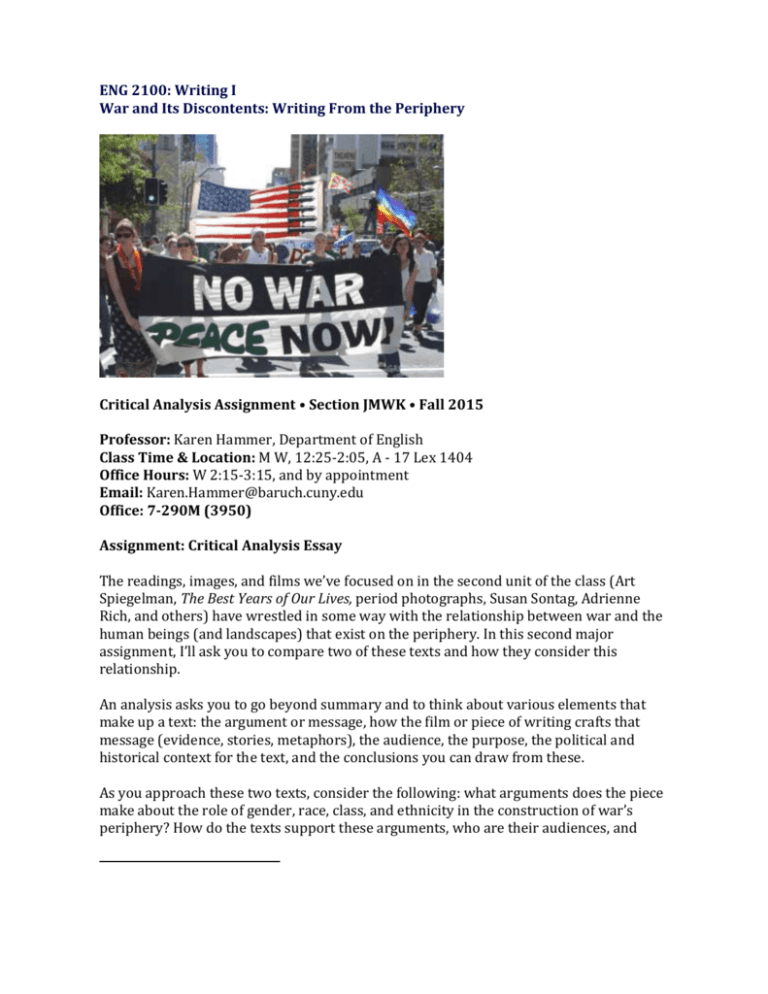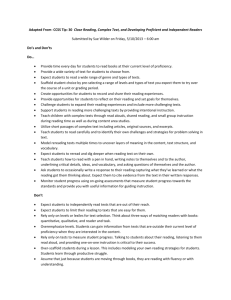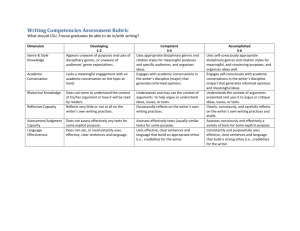CriticalAnalysis15 - Blogs@Baruch
advertisement

ENG 2100: Writing I1 War and Its Discontents: Writing From the Periphery Critical Analysis Assignment • Section JMWK • Fall 2015 Professor: Karen Hammer, Department of English Class Time & Location: M W, 12:25-2:05, A - 17 Lex 1404 Office Hours: W 2:15-3:15, and by appointment Email: Karen.Hammer@baruch.cuny.edu Office: 7-290M (3950) Assignment: Critical Analysis Essay The readings, images, and films we’ve focused on in the second unit of the class (Art Spiegelman, The Best Years of Our Lives, period photographs, Susan Sontag, Adrienne Rich, and others) have wrestled in some way with the relationship between war and the human beings (and landscapes) that exist on the periphery. In this second major assignment, I’ll ask you to compare two of these texts and how they consider this relationship. An analysis asks you to go beyond summary and to think about various elements that make up a text: the argument or message, how the film or piece of writing crafts that message (evidence, stories, metaphors), the audience, the purpose, the political and historical context for the text, and the conclusions you can draw from these. As you approach these two texts, consider the following: what arguments does the piece make about the role of gender, race, class, and ethnicity in the construction of war’s periphery? How do the texts support these arguments, who are their audiences, and what was their purpose in writing the text or giving the speech? These elements will help you develop your own argument (analysis) about the significance of the two texts on which you’ll focus. For example, if you compare Susan Sontag’s Regarding the Pain of Others with the film Best Years of Our Lives and how they speak on war and its aftermath, you could focus on the differences in the time periods of the two and the purposes of each of their messages. If you compare Adrienne Rich’s poem “Eastern War Time” and Art Spiegelman’s Maus, you could think about the similarities of the two stylistically and topically but also the differences in the messages and the ways each deals with the topic of war and marginalization. Regardless of which two texts you choose to compare, I’ll expect you to use references to other readings from the semester to help support your analysis. Grading criteria • Thesis/Focus (40%): How well have you informed your readers about the various rhetorical aspects of the two texts (message/argument, audience, purpose, historic and political context, writing style, metaphors) and drawn conclusions about the differences between these two texts and the significance of these rhetorical elements (the “so what” that you offer to your readers)? • Support (30%): How well do you support your analysis with examples from the two texts, as well as other texts we’ve read this semester? How well do you integrate direct quotes from the texts (without “padding” your paper with too many long quotes)? • Organization (20%): How well do you organize the piece? Is the organization logical and coherent? • Style, Grammar, and Editing (10%): How well have you edited and proofread so that no grammatical or spelling errors detract from the message and your credibility as a writer? Paper specs • 1,800-2,100 words / ~ 6-7 double-spaced pages • 25% of course grade Important dates Wednesday, October 21: Brainstorm for Critical Analysis Essay with your writer’s group (to be announced). Monday, October 26: No formal class meeting; conferences with Professor Hammer about your essay. Wednesday, October 28: Peer and instructor review of draft 1 + writer’s reflective letter describing your choices, process, and thinking about your piece so far, and instructions for readers to help them give you feedback . Wednesday, November 4: Final revised essay + writer’s reflective cover letter due in google drive folder.









